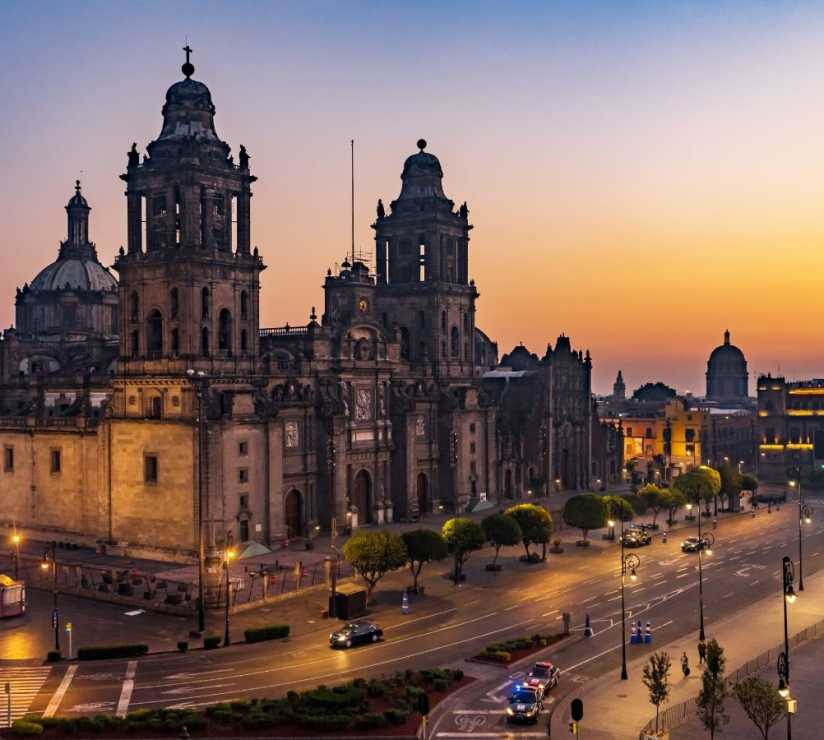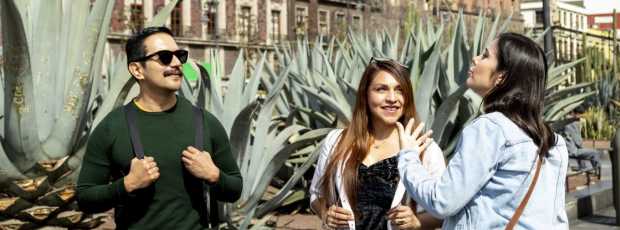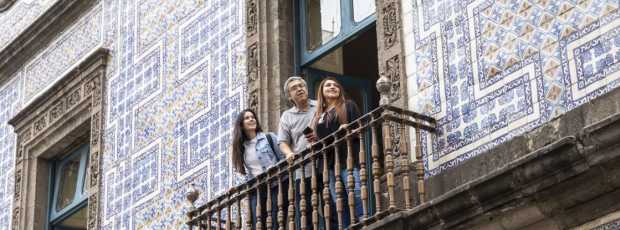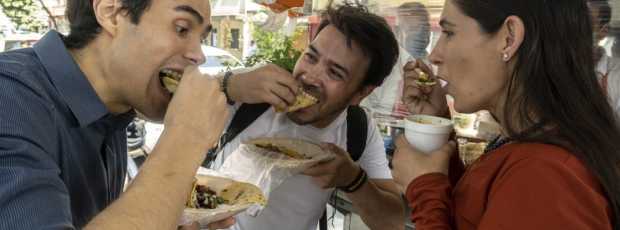Table Of Contents
- Where Should I Go on My First Day in Mexico City?
- The Centro Histórico: More Than Colonial Architecture
- Why Chapultepec Castle Isn't Just for History Buffs
- Chapultepec Park: The City's Green Heart
- Is Roma Norte the Trendiest Part of the City?
- Frida Kahlo's Coyoacán: Beyond the Tourist Trail
- Palacio de Bellas Artes: Where Fine Arts Meet Politics
- The Secret Side of San Ángel
- Xochimilco: Beyond the Colorful Trajineras
- Where to Eat Al Pastor Like a Local
- Finding the Best Mexico City Restaurants
- Planning Your Perfect Mexico City Experience
The first time someone asks me about the best places to visit in Mexico City, I usually pause. Not because I don't have answers, but because I have too many. This sprawling metropolis in Latin America holds layers of stories that most visitors never get to see beneath the surface.
I've lived here my entire life, watching neighborhoods transform and traditions endure in this vibrant Mexico City. My grandmother sold tamales near the Cathedral, my father painted houses in Roma Norte before it became trendy, and I've spent countless Sunday afternoons floating through Xochimilco's canals. Mexico City isn't just where I live. It's woven into who I am.
That's why I want to share the places that matter. Not the spots you'll find on every tourist list, but the corners where this city breathes. Where you can taste five centuries of Mexican history in a single taco, or stand in a courtyard where Diego Rivera once mixed his paints. These are my favorite places in Ciudad de México, the capital that locals simply call "Mexico," but the world knows as one of Latin America's greatest urban centers. From the heart of Mexico City's historic center to its most vibrant neighborhoods, each location tells a story that connects past and present.
Where Should I Go on My First Day in Mexico City?
Start at the heart of Mexico City. Plaza de la Constitución, known locally as the Zócalo, sits at the center of everything that matters in Mexico. This isn't just the main plaza, it's where Aztec ceremonies once took place, where Spanish conquistadors built their colonial city, and where Mexican independence was declared.
The size of it catches everyone off guard. You can fit eight football fields inside this UNESCO World Heritage Site. But what gets me every time is standing there in the early morning when the Cathedral's bells start ringing, and you realize you're occupying the same space humans have gathered for over 700 years.
Walk east from the plaza to Templo Mayor, where pieces of the Aztec empire emerge from the ground beneath your feet. This isn't some recreated theme park version of pre-Columbian life. These are the stones where Aztec priests performed ceremonies, where the city of Tenochtitlan reached toward the sky.
The museum here houses ancient Mexican artifacts that most people have only seen in textbooks. You'll see jade masks, obsidian knives, and stone sculptures of gods whose names we still whisper. When you stand before the massive circular stone depicting the dismembered goddess Coyolxauhqui, you understand why the Spanish were both terrified and mesmerized by what they found during the Spanish conquest. The Museo Nacional de Antropología may be larger, but Templo Mayor offers the most direct connection to Mexico's pre-Hispanic past.
Before the morning crowds arrive, step inside the National Palace, known locally as Palacio Nacional. The Mexican government still operates from this building that houses the federal executive branch, but what draws visitors is Diego Rivera's murals covering the main staircase walls. Rivera spent four years painting Mexican history from the Aztec empire through the Mexican Revolution, and every detail tells a story.
I've brought friends here who know nothing about Mexican history, and they spend hours just following the narrative through Rivera's brushstrokes. You can see Cortés arriving, indigenous people working in silver mines, Benito Juárez signing laws, and revolutionary soldiers fighting for land reform. It's like reading a visual book about everything that made this country. There's a good reason why Diego Rivera remains Mexico's most celebrated muralist. His work transforms government buildings into public art galleries.
The Centro Histórico: More Than Colonial Architecture
Most visitors stick to the major monuments in the centro histórico, but the magic happens in the surrounding blocks of the historic center. This is where 500 years of architecture tell their story without museum labels or guided tour commentary. The Centro Histórico contains more colonial buildings per square block than almost anywhere else in the world, making it a UNESCO World Heritage Site that rewards slow exploration.
Walk down Francisco I. Madero Street and notice how Art Nouveau facades from the early 1900s sit next to baroque colonial churches from the 1600s. Street vendors sell corn from the same corners where their grandparents set up shop. Buildings that housed Spanish nobles now contain family-run restaurants serving recipes passed down through generations.
Stop for breakfast at one of the small family places tucked between the larger restaurants. Order chilaquiles if you want Order chilaquiles if you want something that tastes the way Mexican comfort food should: fried tortilla chips swimming in red or green salsa, topped with cream, cheese, and sometimes a fried egg. It's simple food that connects you to how people eat here in this city.
Duck into any of the smaller churches scattered throughout the centro histórico. Each one holds stories that never make it into guidebooks. San Francisco Church contains the tomb of Cortés (though most locals prefer not to think about that). La Profesa Church witnessed secret meetings during the independence movement. These aren't just religious buildings. They're repositories of everything this city has lived through in Mexican history.
Many churches display images of the Virgin Mary that reflect Mexico's unique blend of Catholic and indigenous traditions. The colonial architecture in this part of Mexico City represents some of the finest examples in the Americas. Centro histórico is a must-see attraction for anyone interested in architectural history.
Looking for a private city experience in Mexico City?
Explore the city with a local who plans a private day just for you; no groups, no scripts.
Why Chapultepec Castle Isn't Just for History Buffs
Chapultepec Castle sits on Chapultepec Hill like a European fantasy dropped into the middle of Mexico City. But this isn't some Disney version of a royal palace. This castle witnessed some of the most dramatic moments in Mexican history, and walking through its rooms feels like stepping into a political thriller.
Emperor Maximilian's Doomed Mexican Empire
Emperor Maximilian I lived here during his brief, doomed reign in the 1860s. The Habsburg prince that Napoleon III installed as Mexico's emperor filled these rooms with European furniture and tried to create a Mexican Versailles. You can still see his bedroom, his wife Carlota's sitting room, and the dining hall where they entertained foreign dignitaries. None of them knew their hosts would be dead within three years.
The Heroic Last Stand of the Niños Héroes
But the castle's most powerful story comes from 1847, when legend tells us six teenage military cadets chose death over surrender during the Mexican-American War. According to national tradition, the Niños Héroes wrapped themselves in Mexican flags and jumped from the castle walls rather than let American troops capture them. Walking through the same halls where this legendary act of patriotism is said to have taken place puts Mexican national pride into perspective.
The view from the castle's terraces shows you why this hill has always held strategic importance. You can see Mexico City stretching to the mountains in every direction. in every direction. Twenty million people live in what was once a lake bed. On clear days, you can make out the snow-covered peaks of Popocatépetl and Iztaccíhuatl volcanoes watching over the valley like ancient guardians. This building offers one of Mexico City's most spectacular vantage points.
Chapultepec Park: The City's Green Heart
Bosque de Chapultepec surrounds the castle like a green oasis in this concrete jungle. But calling it just one of Mexico City's parks undersells what this place means to the city. This is where families come every Sunday, where couples take walks, where friends meet for picnics, where the city breathes. As one of the world's largest city parks, Bosque de Chapultepec covers more ground than New York's Central Park.
The park has four sections, each with its own personality. Section one houses most of the museums and gets crowded on weekends. Sections two and three feel more like neighborhood parks where locals jog and walk their dogs. Section four is newer and less visited, perfect for those seeking quieter green spaces. Many visitors who stay at hotels in nearby neighborhoods use Bosque de Chapultepec as their daily exercise ground. The parks system in Mexico City centers around this massive green space, which serves as both a recreational area and a cultural center for millions of residents.
The National Museum of Anthropology anchors one corner of the park, and if you only visit one museum in Mexico City, make it this one. The building itself is a work of art. A concrete canopy supported by a single column creates a courtyard that feels both ancient and modern. This museum houses the world's most comprehensive collection of pre-Columbian artifacts from Mexico and Central America.
Inside, you'll find artifacts that redefine what you think you know about pre-Columbian civilizations. The Aztec Hall contains the original Aztec calendar stone, not the reproduction you see everywhere else. Mayan rooms display jade masks that seem to glow with inner light. Olmec colossal heads stare at you with expressions that bridge 3,000 years.
But my favorite part is watching Mexican families move through these galleries. Parents explain to their children that these aren't foreign artifacts. This is their heritage, their ancestors, their history. Kids touch reproductions and ask questions in Spanish and indigenous languages. The museum becomes a conversation between past and present in Mexico City's cultural center. The top floor houses temporary exhibits that rotate throughout the year, offering new reasons to visit this must-visit destination. Many locals consider this the heart of Mexico City's museum district, where ancient Mexican artifacts tell stories that connect modern Mexico to its indigenous roots.
Is Roma Norte the Trendiest Part of the City?
Roma Norte gets called trendy so often that locals sometimes roll their eyes. But the neighborhood earned that reputation honestly. This is where Mexico City's creative energy concentrates, where artists, writers, chefs, and designers have created something that feels both authentically Mexican and internationally sophisticated.
The architecture tells the story of Mexico City's early 20th-century ambitions. Art Nouveau mansions from the Porfiriato era line streets named after European cities (Barcelona, Amsterdam, Orizaba). Wealthy families built these houses to show they could match anything in Paris or Vienna. Then the 1985 earthquake damaged many buildings, rents dropped, and artists moved in. Today, many visitors stay at a boutique hotel in this charming neighborhood. Roma Norte represents one of Mexico City's most successful urban renewal stories, where creative communities transformed earthquake damage into a cultural renaissance.
Walk down Álvaro Obregón on a Saturday morning and you'll see what happens when good bones meet creative energy. Galleries occupy former mansions. Restaurants serve food in dining rooms with original tile floors. Coffee shops roast beans in spaces that once housed wealthy families.
The Saturday market on Plaza Rio de Janeiro shows Roma Norte at its most local. Vendors sell everything from organic vegetables to handmade folk art. Neighbors catch up while buying flowers. Kids play in the fountain while parents drink coffee from local roasters.
This isn't some manufactured hipster scene. It's a neighborhood where people live, work, and raise families. The trendy restaurants coexist with corner stores that have served the same families for decades. Boutique hotels share blocks with apartment buildings where three generations live under one roof in this vibrant Mexico City neighborhood.
What if your day in Mexico City was planned by someone who knows it — and you?
City Unscripted matches you with a local host who creates a private experience based on your interests, not a set route.
Frida Kahlo's Coyoacán: Beyond the Tourist Trail
Everyone knows about La Casa Azul, Frida Kahlo's Blue House turned museum. But Coyoacán offers more than just one museum dedicated to Mexico's most famous artist. A second Frida Kahlo museum is set to open in late 2025, expanding the neighborhood's artistic offerings. But focusing only on museums misses why Coyoacán mattered to Frida Kahlo and Diego Rivera. This neighborhood gave them something central Mexico City couldn't, the feeling of living in a Mexican village while staying connected to the capital's cultural life.
Coyoacán's main plaza feels like stepping into a different century. Colonial buildings with thick walls and red tile roofs surround a plaza where jacaranda trees drop purple flowers like confetti. Street musicians play in the bandstand where Porfirio Díaz once gave speeches. Vendors sell corn on the cob from carts that their grandfathers pushed through these same streets. The Plaza de la Constitución in the center might be Mexico City's official main square, but this plaza in Coyoacán feels more intimate, more connected to daily life in the city.
The house where Frida Kahlo was born, lived most of her life, and died sits just a few blocks from this plaza. But Casa Azul tells only part of her story. Walk through the surrounding streets and you'll see the Coyoacán that shaped her art. The market where she bought pigments, the cantina where she drank with Diego Rivera, and the church where her parents were married.
The neighborhood's food scene reflects this same blend of traditional and artistic. Family restaurants that have served mole for generations share corners with newer places experimenting with pre-Hispanic ingredients. You can eat street tacos that taste exactly like they did in Frida Kahlo's time, or try dishes that reimagine Mexican flavors for contemporary palates. This part of Mexico City preserves culinary traditions alongside its artistic heritage. The Blue House itself draws crowds, but the surrounding streets of Coyoacán reveal the daily rhythms that influenced one of Mexico's greatest artists.
Palacio de Bellas Artes: Where Fine Arts Meet Politics
This cultural landmark represents everything Mexico City aspires to be, a place where high culture meets social consciousness, where beauty serves purpose, where fine arts become a political statement. The building itself embodies this complexity. It was started during the Porfiriato as a monument to European sophistication and completed after the Mexican Revolution as a symbol of national identity.
The theater inside houses Mexico's national opera and ballet companies, but the real attraction is the Tiffany glass curtain. Nearly a million pieces of colored glass create images of the Mexican volcanoes Popocatépetl and Iztaccíhuatl. When the lights behind the curtain shift, the volcanoes seem to glow with internal fire. This building showcases temporary exhibits alongside its permanent collection.
But it's the murals that make this more than just another pretty building. Diego Rivera, José Clemente Orozco, and David Siqueiros covered the walls with images that make political statements as bold today as when they were painted. Rivera's "Man at the Crossroads" shows capitalism and communism competing for humanity's future. Orozco's "Catharsis" depicts war and revolution as both destroyer and creator.
These aren't museum pieces meant for quiet contemplation. They're public art designed to start arguments, change minds, and inspire action. Walking through these halls, you understand why art matters in Mexican culture, why painters and writers are national heroes, and why murals cover public buildings throughout the country. The center of Mexico City's cultural district, this building remains an active venue for performance and exhibitions. José Clemente Orozco and David Siquieros also contributed works that challenge viewers to think about Mexico's social and political evolution. The Palacio de Bellas Artes stands as proof that fine arts can carry political weight, where temporary exhibits often address contemporary social issues alongside historical perspectives.
The Secret Side of San Ángel
While tourists crowd Roma Norte and Coyoacán, San Ángel maintains the quiet dignity of a neighborhood that knows its worth. This former colonial village in the south of Mexico City preserves an atmosphere that feels untouched by the city's urban chaos.
Saturday art markets in the main plaza draw painters and sculptors who've been setting up their easels here for decades. This isn't only tourist art, these are working artists selling pieces they've created in studios around the neighborhood. You can watch painters work while mariachi bands play in the background and families picnic under trees that predate the Spanish conquest.
The neighborhood's cantinas preserve drinking traditions that date back generations. These aren't bars designed for visitors, they're places where neighborhood men gather after work, where business deals get made over mezcal, where songs are sung and stories told until closing time. The atmosphere in these establishments reflects authentic Mexico City culture.
Tip
We match you with the right host, not just any guide.Want to experience the real Mexico City with someone who lives there?
A fully private experience, planned and led by a local host who tailors the day to you
Xochimilco: Beyond the Colorful Trajineras
Everyone who visits Mexico City eventually takes a trip to Xochimilco to ride the colorful trajineras through canals lined with floating gardens. But understanding why these canals exist transforms the experience from a tourist activity to a Mexican history lesson.
These aren't decorative waterways. They're the last remnants of the lake system that once covered this entire valley. The Aztecs built their empire on islands connected by canals like these. The chinampas (floating gardens) surrounding the trajinera routes still produce vegetables and flowers for Mexico City's markets using agricultural techniques developed 800 years ago.
Vendors paddle alongside the colorful trajineras selling everything from corn on the cob to full meals prepared on floating kitchens. The corn here tastes different because it's grown on these floating gardens using heirloom varieties that predate European contact. When you eat elote prepared with chile, lime, and cotija cheese while floating through canals that Aztec farmers once navigated, you're participating in a ritual that connects you to this valley's deepest history. This UNESCO World Heritage Site preserves traditions that shaped Mexico long before the Spanish conquest.
Where to Eat Al Pastor Like a Local
Al pastor tacos represent Mexico City's genius for cultural fusion. Lebanese immigrants in the 1930s brought the technique of cooking meat on vertical spits. Mexican cooks adapted this method using local chiles, pineapple, and corn tortillas. The result became one of the city's most beloved foods.
The best al pastor tacos come from stands where the taquero has perfected the balance between crispy edges and tender interior, where the pineapple adds sweetness without overwhelming the meat's spicy complexity. Watch how locals order. They ask for their tacos "con todo" (with everything) and eat them standing up, right at the counter.
But Mexico City's taco culture extends far beyond al pastor tacos. Morning taco stands serve guisados (stewed meats and vegetables) that change daily based on what's fresh. Afternoon stands specialize in carnitas or barbacoa. Late-night stands cater to people leaving bars and clubs. Each has its own rhythms, its own loyal customers, and its own secrets. Understanding the world of Mexico City's street food requires visiting different neighborhoods and trying various styles of al pastor preparation.
The beauty of taco culture lies in its democracy. Whether you're in a fancy town square or a working-class neighborhood, the ritual remains the same. Locals know which stands offer the best value, which taqueros have the most skilled hands, and which salsas pack the perfect heat. This isn't just food: it's social fabric, connecting people across class lines through shared appreciation of perfectly crafted simplicity. Every corner of Mexico City tells a different story through its street food, from the morning rush of office workers grabbing breakfast tacos to the late-night crowd seeking comfort after a long day.
Finding the Best Mexico City Restaurants
Mexico City's restaurant scene has evolved far beyond the taquerias and cantinas that built its reputation. A new generation of chefs has reimagined Mexican cuisine, treating indigenous ingredients with the same reverence French chefs show for their terroir. These establishments represent some of the best dining experiences in Mexico City and Latin America.
Modern Mexican Cuisine Revolution
These restaurants don't abandon tradition. They deepen it. Chefs source heirloom corn varieties from specific regions, work with salt producers who use pre-Hispanic techniques, and collaborate with indigenous communities to understand forgotten cooking methods. The results taste both completely Mexican and unlike anything you've experienced in the world of contemporary cuisine.
But the city's food culture remains democratically delicious. A meal at a high-end restaurant might cost what you'd spend on a week of street food, but both experiences offer equally valid ways to understand Mexican flavors. The choice isn't between authentic and pretentious. It's between different expressions of the same culinary heritage that makes Mexico City one of Latin America's top culinary destinations.
Ready to plan your perfect day in Mexico City?
Start your experiencePlanning Your Perfect Mexico City Experience
Mexico City rewards curiosity over checklist-ticking. The neighborhoods I've described each deserve at least half a day, but rushing through them defeats the purpose. This is a city that reveals itself slowly, through conversations with vendors, through wrong turns that lead to unexpected discoveries, through sitting in plazas and watching daily life unfold.
The metro system connects these neighborhoods efficiently, but walking between attractions reveals details you'll miss underground. Mexico City's blocks are short, its sidewalks (where they exist) are busy with life. Every few steps brings new sights, sounds, and smells that tell you more about this place than any guided tour could. Visitors often find that wandering through the city center provides unexpected insights into daily life in Mexico.
Taking a guided tour can provide historical context, but the real magic happens when you venture out on your own. Each plaza tells a different story, each building holds secrets, and each corner offers new perspectives on this vast metropolis. Mexico City rewards the curious traveler who takes time to absorb its complexity. For those interested in things to do in Polanco, the affluent neighborhood offers a different perspective on the city's modern development.
Come with common sense about safety (like any major city in Latin America, Mexico City requires awareness), but don't let fear prevent you from experiencing its generosity. Most locals you meet will be eager to help, proud to share their city, and patient with your attempts at Spanish. This is a place that takes care of visitors who show respect for its complexity. Remember to pack toilet paper for public restrooms, as it's not always available.
The places I've shared represent my Mexico City, the one that lives in my memories, that shows up in my dreams, that shaped who I became. Your Mexico City will be different, and that's exactly how it should be. This city has room for every story, space for every curiosity, time for every question.
Just remember to bring your appetite. For food, for beauty, for Mexican history, for life itself. Mexico City serves generous portions of all of them in this remarkable corner of Latin America.
What if your day in Mexico City was planned by someone who knows it — and you?
City Unscripted matches you with a local host who creates a private experience based on your interests, not a set route.
Want to experience the real Mexico City with someone who lives there?
A fully private experience, planned and led by a local host who tailors the day to you











